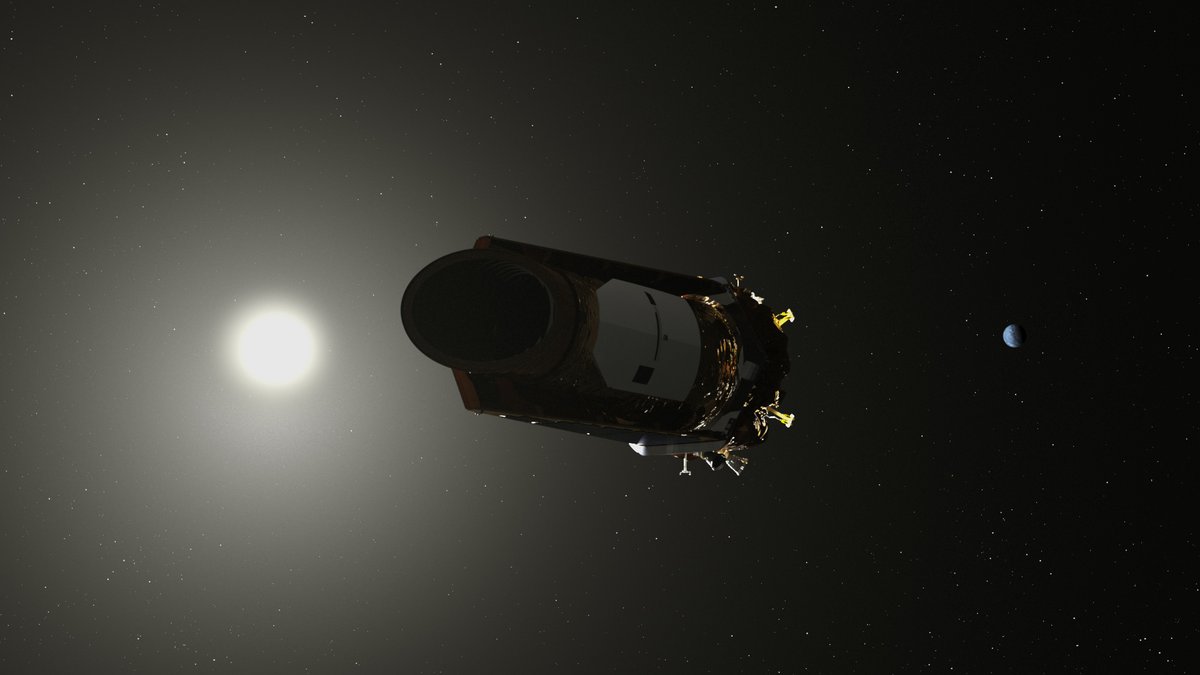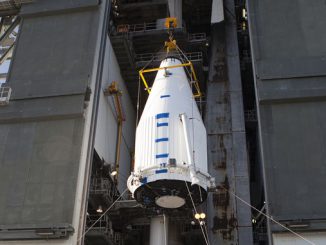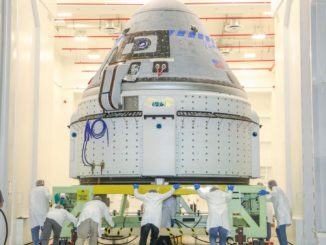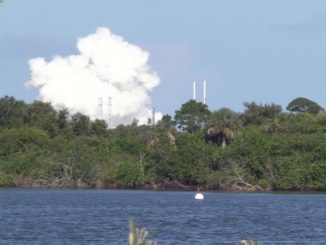
After downloading science data and bypassing a balky thruster, NASA’s Kepler mission has resumed its search for planets around other stars after a two-month pause in observations, but engineers expect the spacecraft to soon run out of fuel.
NASA said in a statement Wednesday that the Kepler telescope began collecting new science data Aug. 29 for its 19th observation campaign after controllers assessed a problem with one of the spacecraft’s eight thrusters used for pointing.
Engineers suspended Kepler’s science observations in early July after on-board sensors detected a drop in fuel pressure, a sign that the spacecraft is running low on fuel. Engineers are not sure of exactly how much hydrazine fuel remains in Kepler’s tank, so they rely on pressure data, calculation of usage rates and other means to estimate the spacecraft’s remaining fuel supply.
Managers decided to put Kepler in a fuel-conserving hibernation-like state until early August, when the spacecraft was scheduled to radio Earth and begin downlinking science data stored in its on-board memory.
Officials did not want to risk the spacecraft running out of fuel and losing the newest dataset captured by Kepler’s telescope and 95-megapixel camera, designed to look for dips in light coming from distant stars that could be caused by a transiting planet.
Kepler woke up from hibernation and downlinked the observations to scientists through NASA’s Deep Space Network last month, but managers did not immediately proceed with the mission’s next observing run — known as Campaign 19 — as planned. An update on Kepler posted by NASA on Aug. 24 said engineers were looking into the health of the spacecraft and determining a “full range of options and next steps.”
It turns out officials were studying the behavior of one of Kepler’s thrusters.
“After being roused from sleep mode the spacecraft’s configuration has been modified due to unusual behavior exhibited by one of the thrusters,” NASA said in Wednesday’s statement. “Preliminary indications are that the telescope’s pointing performance may be somewhat degraded. It remains unclear how much fuel remains; NASA continues to monitor the health and performance of the spacecraft.”
Alison Hawkes, a spokesperson at NASA’s Ames Research Center, said engineers decided to remove the troublesome thruster from use during precision pointing of the spacecraft, according to a report published by Space News. She added that the unusual thruster behavior could be a symptom of Kepler’s low fuel state, in which case other thrusters could start to show problems.
“By eliminating the use of the thruster for precision pointing, we are protecting against it being an issue unrelated to the fuel,” Hawkes told Space News.
Launched in March 2009, Kepler now relies on its thrusters to keep its telescope steadily pointed toward star fields after two of the spacecraft’s four reaction wheels failed earlier in the mission. Kepler needed at least three reaction wheels to maintain its gaze toward a pre-selected field of more than 150,000 stars in the constellations Cygnus and Lyra, and with the loss of the craft’s second wheel in 2013, managers called an end to Kepler’s primary mission phase.
Engineers devised a new way for Kepler to search for exoplanets by using a combination of thruster firings, the two remaining reaction wheels and solar pressure to keep the spacecraft precisely pointed. Rather than focusing on a single star field, Kepler’s extended mission — known as K2 — looks at one part of the sky for around 80 days, then shifts to aim toward another section of the sky for the next campaign.
The observatory requires stable pointing to be able to detect faint planet transits, and the use of solar pressure for pointing stability depends on the sun’s position relative to Kepler as the spacecraft flies around the solar system an Earth-trailing orbit.
Since Kepler’s launch, observations over the course of the primary and extended missions have allowed astronomers to confirm the discovery of 2,652 worlds circling other stars, plus more than 2,700 exoplanet candidates that need follow-up. NASA says scientists analyzing Kepler data have, so far, verified the existence of more than 30 near-Earth-sized planets in the so-called habitable zones of their stars — at the right distance to potentially harbor liquid water.
Email the author.
Follow Stephen Clark on Twitter: @StephenClark1.



